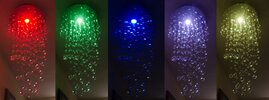- Joined
- 21 Dec 2017
- Messages
- 30
- Reaction score
- 5
- Country

I am looking for 12V G4 LEDs for a large light fixture.
The choice of (current) dimmable LEDs is minimal. However can I dim "non dimmable" G4 LEDs using a constant voltage PWM dimming driver?
This appears to work with a single G4 LED in a test setup but I am concerned about longevity of life (the light fixture is inaccessible).
There will be 36 12V bulbs in parallel if that makes a difference.
Thanks
The choice of (current) dimmable LEDs is minimal. However can I dim "non dimmable" G4 LEDs using a constant voltage PWM dimming driver?
This appears to work with a single G4 LED in a test setup but I am concerned about longevity of life (the light fixture is inaccessible).
There will be 36 12V bulbs in parallel if that makes a difference.
Thanks


